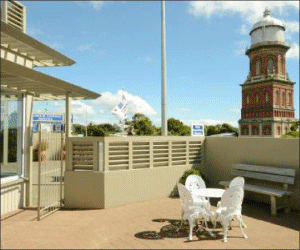Significant growth still being seen in Southland property market
Lucy Henry
16 September 2020, 5:43 PM

The Southland property market has continued its strong upward trend into August, achieving a new record median house price of $373,000, up from $310,000 at the same time last year.
That is a hefty increase of 20.32% in just one year.
Real Estate Institute of New Zealand (REINZ) chief executive Bindi Norwell said the market seemed to have picked up again with more first home buyers and investors in the market compared to last month.
Advertisement
Advertise on the Southland App
“The low-interest rates are attractive to both first home buyers and investors. Open homes have been busier, and inquiries have been steady with buyer interest spread across the market. Over the next few months, we expect the market will continue to improve with the usual slow down as we approach the end of the year," she said.
Ms Norwell said the House Price Index for Southland had "poor returns over the past few months (the worst over three months) but still remained the fifth strongest performer over the past 12 months.
The REINZ measures the average of sale prices for common groups.
It avoids distortions in the data that arise when there are sudden shifts in the type of houses being sold, for example, when an unusually large representation of high-end houses are sold, rather than changes in the true market value.
Ms Norwell said the increase in the median house price in Southland was likely "bolstered by the 15.6 percentage point increase in sales between the $500,000 and $1,000,000 mark when compared to the same time last year".
Price increases were high throughout Southland. The median house price in Gore increased from $276,000 to $340,000. The median house price in Invercargill City increased from $317,500 to $369,000 and the median house price in the Southland District increased from $301,000 to $399,000.
Advertisement
Advertise on the Southland App
Real Estate Institute New Zealand regional director for Southland Gail Hudson said she thought a combination of record-low interest rate – which was making borrowing easier and keeping money in the bank almost pointless – coupled with overall confidence in the market was keeping prices high.
"Whilst the banks are really tough on lending, the money is so cheap."
"People are feeling a lot more positive than they have previously [during lockdown], so they're more confident and they're confident enough to spend money.
"Only a percentage of people are happy to invest in the share market and having money in the bank has bever been such a bad idea, so people are turning to property."
Ms Norwell added that the rate the property market had bounced back post lockdown had been "astonishing", and had certainly surpassed many predictions forecasting a dip in the market.
However, whether the current growth was sustainable was "the elephant in the room," Ms Hudson said, but for now prices were holding strong.
Advertisement
Advertise on the Southland App
She said she believed Southland's success could be largely attributed to increased domestic tourism in the last five years, which had given Southland the needed exposure to appeal to a wider range of buyers looking to make the most of cheaper house prices, beautiful landscapes and easy living.
"It's well deserved for Southland," she said.
Interestingly, Ms Hudson said it appeared that the new healthy homes legislation passed last July, had not put off landlords purchasing investment property.
"We thought with this new legislation healthy homes, people would be bailing," she said, but instead there had been a steady stream of first home buyers and investors.
The healthy homes standards became law on 1 July 2019 and introduced specific minimum standards for heating, insulation, ventilation, moisture and drainage, and draught stopping in rental properties for landlords to adhere to.
The number of properties sold in Southland increased by 38.6% in the month of August, (from 132 to 183 – 51 more houses) and an additional 11 properties were sold in that same period, increasing from 324 to 335. This bucked the national trend which has seen a slump in inventory.
Ms Norwell said it would be interesting to see how the market behaved moving into spring, as this was typically a time when more sales occured as the market warmed up.
“As we’ve already seen, 2020 seems to be defying all predictions and going against all norms at this point in time. However, the full impact of COVID-19 may not have been realised yet, particularly in relation to unemployment and the economy,” she said.


